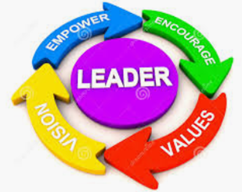IN ACTION
In the video Collective Teacher Efficacy, Peter DeWitt (2019) discusses the power of CTE and how it impacts teachers and student learning. As you watch the video consider how his message aligns with the information presented in this module.
Video: Collective Teacher Efficacy (5:40 min)
Sources of Efficacy
This learning module examined the sources or experiences that help to build self-efficacy and CTE. As a review, watch a segment of the video Self-Efficacy between 3:22 and 6:11 minutes as Brett Jones (2013) explains the four sources of efficacy.
Video: Self Efficacy Theory (3:22 min. to 6:11 min.)
Four Sources of Efficacy (Bandura, 1986)
- Mastery Experiences
- Vicarious Experiences
- Social Persuasion
- Affective State
Reflection Questions
- What experiences can you create or access to build CTE?
- What can school leaders do to promote a positive and collaborative school climate that would encourage educators to access experiences to build CTE?
Ways to Build Collective Teacher Efficacy
Lessons within this module presented four techniques a) collaboration and social networks, b) teacher leadership, c) teacher voice, and d) collaborative teacher inquiry, that can be used to develop and enhance CTE within a school/district. Using the questions and documents below, reflect on your school/district’s strengths and needs. Then create action steps focused on the development of CTE.
Collective Teacher Efficacy: Guiding Questions for Taking Action
Social Networks and Collaboration | What structures does your school currently have to build and strengthen professional collaboration? What challenges does your school face in finding time and providing structures to establish dense collaborative networks? How might these challenges be overcome? What will be your next steps to improve collaboration? How might you increase frequency, productivity, and/or include more staff? |
Teacher Leadership | Do school administrators embrace opportunities for shared leadership? How might any apprehension be overcome? Do teachers take a leading role in professional development events at your school? If not, how might they be encouraged to take the lead? How might your school/district be enhanced by empowering teachers and placing them in leadership roles? What would be needed to overcome challenges to teacher leadership? What action steps would be needed to develop strong teacher leadership in your school/district? |
Teacher Voice in Decision-Making and Problem-Solving | Does your school culture value teacher voice? What is your evidence? What structures and protocols does your school/district use to encourage teacher input for decision-making and problem-solving? How would you rate the climate of trust in your school/district? How might greater trust be built? What ideas do you have for creating a climate and structures that value and validate teacher voice? |
Collaborative Teacher Inquiry | How might a structured inquiry process for teachers benefit your school/district? What structures does your school/district use to support Collaborative Teacher Inquiry? What are some compelling and reoccurring problems of instruction that might be investigated through teacher inquiry teams? What are the next steps for establishing structures and supports for Collaborative Teacher Inquiry? |
Getting Started with Collective Teacher Efficacy
The CTE Planning Reflection Questions and/or the CTE Planning Flowchart can be used by teams to make decisions regarding next steps for Collective Teacher Efficacy professional development and implementation. Based on the responses the flow chart can guide your school/district to which CTE strategy might be the best fit for your school/district. Develop an action plan for next steps.
The CTE Self-Assessment Practice Profile (SAPP) can also be used to help prioritize the professional learning needs for your school/district regarding CTE. For Missouri districts, this tool should be accessed through the Virtual Learning Platform (VLP).

